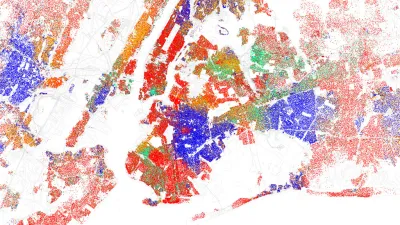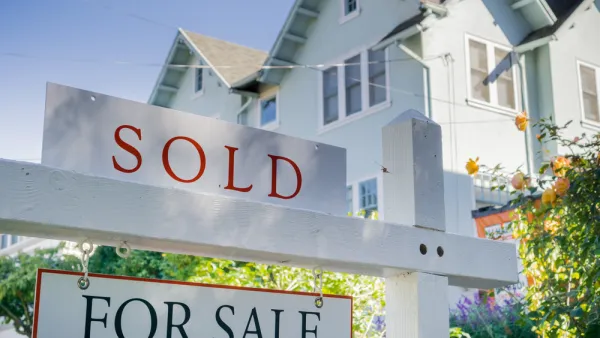According to a study, residential segregation and anti-black bias combine to devalue properties in majority-black neighborhoods by an average of $48,000 per home.

A Brookings report has found that in majority-black neighborhoods, owner-occupied homes are consistently undervalued, leading to negative ripple effects on community prosperity and the ability of residents to accrue wealth. Cumulative losses amount to $156 billion, a so-called "segregation tax."
Patrick Sisson writes, "The researchers noted that, while some of the majority-black neighborhoods they examined exhibited features associated with lower property values, including higher crime rates, longer commute times, and less access to high-scoring schools and well-rated restaurants, their analysis shows that these factors only explain roughly half of the undervaluation."
Accounting as well for the tendency of housing stock in majority-black neighborhoods to be older, with less average space, the researchers still found disparities in value that they peg to anti-black bias. Beyond its effects on individual homeowners, Sisson writes, systemic devaluation reduces the tax base and overall level of wealth present in communities, negatively impacting local education and infrastructure.
FULL STORY: How a ‘segregation tax’ is costing black American homeowners $156 billion

National Parks Layoffs Will Cause Communities to Lose Billions
Thousands of essential park workers were laid off this week, just before the busy spring break season.

Retro-silient?: America’s First “Eco-burb,” The Woodlands Turns 50
A master-planned community north of Houston offers lessons on green infrastructure and resilient design, but falls short of its founder’s lofty affordability and walkability goals.

Delivering for America Plan Will Downgrade Mail Service in at Least 49.5 Percent of Zip Codes
Republican and Democrat lawmakers criticize the plan for its disproportionate negative impact on rural communities.

Test News Post 1
This is a summary

Test News Headline 46
Test for the image on the front page.

Balancing Bombs and Butterflies: How the National Guard Protects a Rare Species
The National Guard at Fort Indiantown Gap uses GIS technology and land management strategies to balance military training with conservation efforts, ensuring the survival of the rare eastern regal fritillary butterfly.
Urban Design for Planners 1: Software Tools
This six-course series explores essential urban design concepts using open source software and equips planners with the tools they need to participate fully in the urban design process.
Planning for Universal Design
Learn the tools for implementing Universal Design in planning regulations.
EMC Planning Group, Inc.
Planetizen
Planetizen
Mpact (formerly Rail~Volution)
Great Falls Development Authority, Inc.
HUDs Office of Policy Development and Research
NYU Wagner Graduate School of Public Service





























